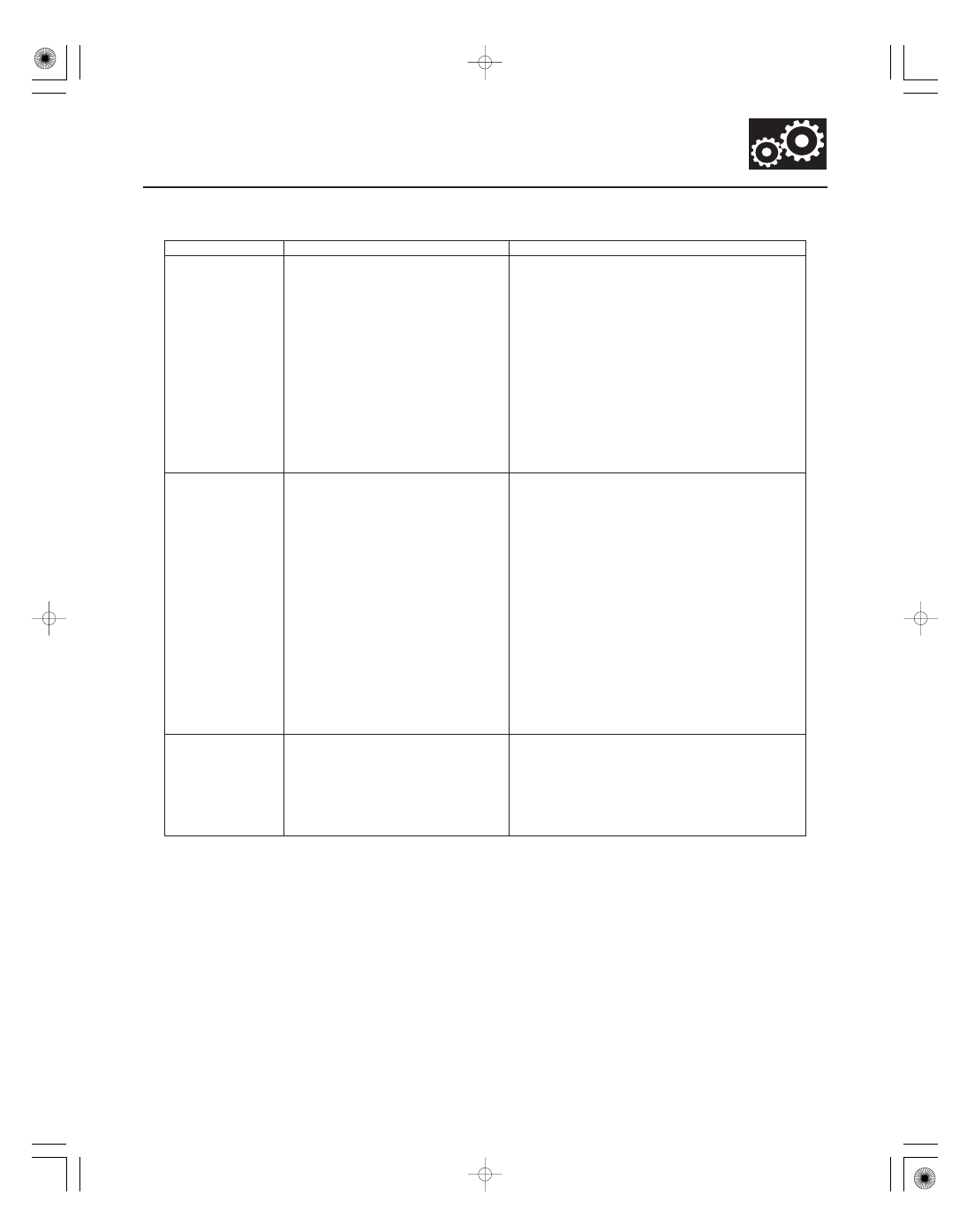Acura CSX. Manual - part 236

Symptom
Probable cause(s)
Notes
14-25
•
•
•
•
•
•
•
•
•
•
•
•
•
•
•
•
Torque converter
clutch does not
operate smoothly
1.
2.
3.
4.
5.
6.
Shift solenoid valve E defective
A/T clutch pressure control
solenoid valve A defective
Torque converter clutch piston
defective
Torque converter check valve
defective
Lock-up shift valve defective
Lock-up control valve defective
Check for a stored DTC, and check for loose
connectors.
Inspect shift solenoid valve E for seizure, and the
O-rings for wear and damage.
Inspect the A/T clutch pressure control solenoid
valve filter/gasket and the O-rings for wear and
damage, and inspect the solenoid valves for
seizure.
Replace the torque converter.
Check the lock-up control valve in the main valve
body for free movement, and check the lock-up
control valve spring for wear and damage.
Check the lock-up shift valve in the regulator
valve body for free movement, and check the
lock-up shift valve spring for wear and damage.
Torque converter
clutch does not
engage
1.
2.
3.
4.
5.
6.
7.
8.
Shift solenoid valve E defective
A/T clutch pressure control
solenoid valve A defective
Input shaft (mainshaft) speed
sensor defective
Output shaft (countershaft) speed
sensor defective
Torque converter clutch piston
defective
Torque converter check valve
defective
Lock-up shift valve defective
Lock-up control valve defective
Check for a stored DTC, and check for loose
connectors.
Inspect shift solenoid valve E for seizure, and the
O-rings for wear and damage.
Inspect the A/T clutch pressure control solenoid
valve filter/gasket and the O-rings for wear and
damage, and inspect the solenoid valves for
seizure.
Replace the torque converter.
Check the input shaft (mainshaft) speed sensor
and the output shaft (countershaft) speed sensor
installation.
Check the lock-up control valve in the main valve
body for free movement, and check the lock-up
control valve spring for wear and damage.
Check the lock-up shift valve in the regulator
valve body for free movement, and check the
lock-up shift valve spring for wear and damage.
A/T gear position
indicator does not
indicate shift lever
positions
1.
2.
3.
Transmission range switch
defective or out of adjustment
Shift cable broken or out of
adjustment
Connection between the shift
cable and transmission or body is
worn
Check for a stored DTC, and check for loose
connectors.
Inspect the transmission range switch operation.
Check for a loose shift cable at the shift lever and
the selector control lever.
08/08/21 14:37:11 61SNR030_140_0027